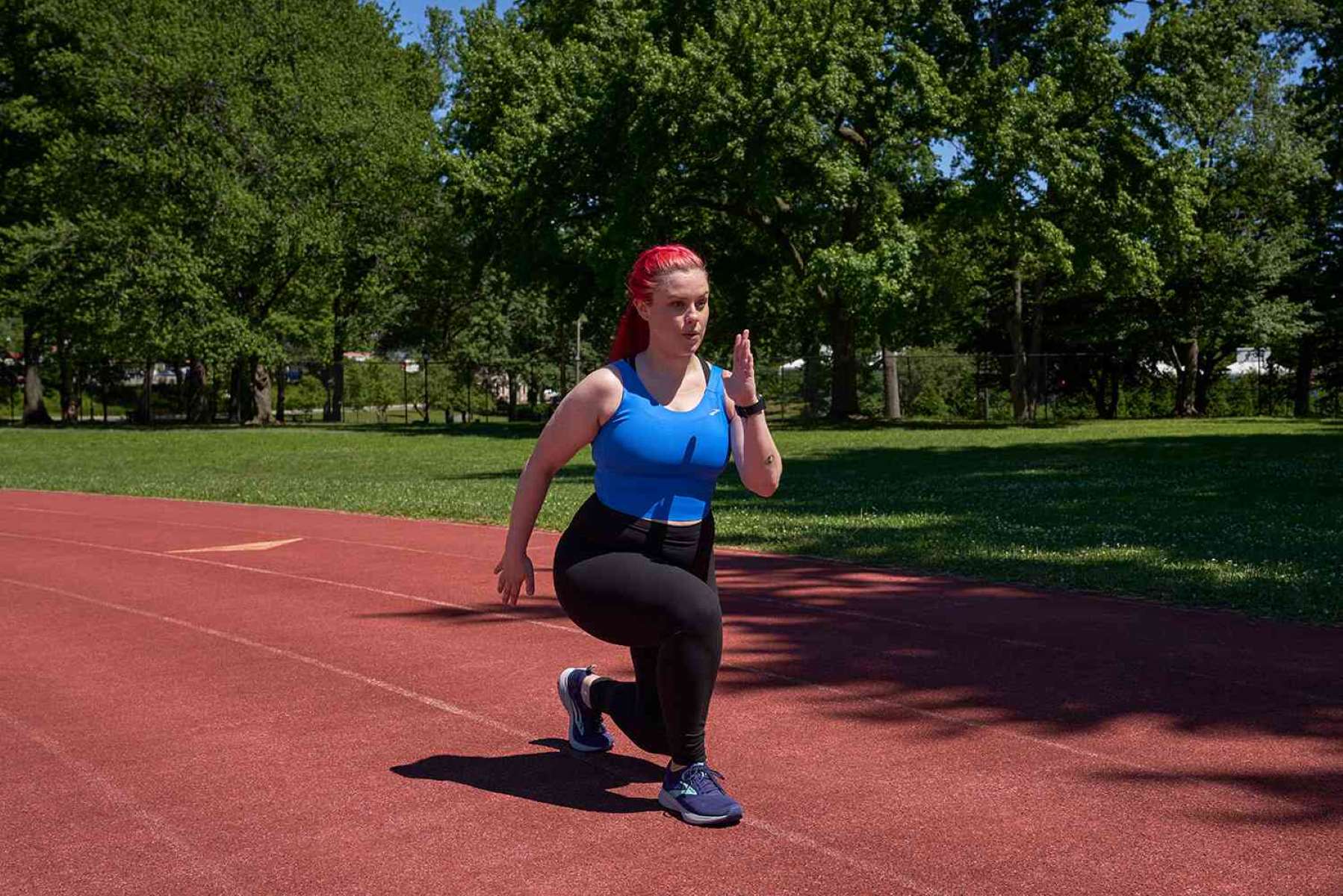

Featured
What Happens When You Don’t Exercise
Published: September 30, 2023
Discover the consequences of not prioritizing exercise. From weight gain to decreased energy levels, find out why exercise is crucial for overall health.
Introduction
Living a sedentary lifestyle can have detrimental effects on both our physical and mental well-being. In today’s modern world, where technology and convenience have made our lives more comfortable, it is increasingly easy to fall into a routine of minimal physical activity. However, neglecting regular exercise can lead to a variety of negative consequences.
When we don’t exercise, our bodies miss out on the many benefits that physical activity provides. Regular exercise helps to keep our muscles strong, our weight in check, and our cardiovascular system healthy. It also positively impacts our mental health, energy levels, and cognitive function.
In this article, we will explore the various negative effects of not exercising and why it is crucial to incorporate physical activity into our daily lives. From decreased muscle strength to weight gain, increased risk of chronic diseases, and poor cardiovascular health, the repercussions of a sedentary lifestyle are far-reaching.
By understanding the consequences of not exercising, we can motivate ourselves to move our bodies and prioritize regular physical activity. So let’s dive in and examine what happens when we don’t exercise.
Negative effects of a sedentary lifestyle
Living a sedentary lifestyle, characterized by prolonged sitting or minimal physical activity, can have significant negative effects on our health. Let’s explore some of these consequences in more detail:
- Decreased muscle strength and endurance: When we don’t exercise, our muscles don’t get the opportunity to be challenged and strengthened. Over time, this can lead to muscle weakness and decreased endurance, making everyday activities more difficult to perform.
- Weight gain and obesity: Lack of physical activity can contribute to weight gain and obesity. When we don’t engage in regular exercise, we burn fewer calories, leading to an energy imbalance that can lead to weight gain. Additionally, a sedentary lifestyle often goes hand in hand with poor dietary choices, further exacerbating the problem.
- Increased risk of chronic diseases: Numerous studies have shown that a sedentary lifestyle is associated with an increased risk of chronic diseases such as cardiovascular disease, type 2 diabetes, and certain types of cancer. Regular exercise has been shown to reduce the risk and severity of these conditions.
- Poor cardiovascular health: Without regular physical activity to strengthen our heart and improve our circulation, our cardiovascular system can suffer. This can lead to conditions such as high blood pressure, heart disease, and an increased risk of heart attacks and strokes.
- Loss of flexibility and range of motion: When we don’t exercise, our joints and muscles can become stiff and inflexible. This loss of flexibility can limit our range of motion and make it harder to perform everyday tasks, leading to a decreased quality of life.
These are just a few examples of the negative effects that a sedentary lifestyle can have on our health. It is crucial to prioritize regular physical activity to counteract these consequences and maintain optimal well-being.
Decreased muscle strength and endurance
One of the most noticeable effects of a sedentary lifestyle is the decrease in muscle strength and endurance. When we consistently engage in activities that require little muscular effort, our muscles become weaker and lose their ability to perform tasks efficiently.
Regular exercise, particularly strength training, is essential for maintaining and building muscle strength. When we don’t exercise, our muscles are not sufficiently challenged. Over time, this lack of stimulation leads to muscle atrophy, where the muscle fibers shrink and weaken.
With decreased muscle strength, even simple activities like carrying groceries or climbing stairs can feel more difficult. Everyday tasks that used to be effortless become tiring and strenuous.
Additionally, a sedentary lifestyle can result in decreased muscle endurance. Endurance refers to the ability of muscles to sustain activity over an extended period. When we don’t regularly engage in physical activity, our muscles become less efficient at utilizing oxygen and energy, leading to faster fatigue.
Without adequate muscle endurance, activities that require sustained effort, such as jogging, cycling, or even prolonged periods of standing, can become challenging. This can significantly impact not only our ability to participate in physical activities but also our overall productivity and quality of life.
Fortunately, this decline in muscle strength and endurance can be reversed through regular exercise. Incorporating strength training exercises into our routine helps to maintain and build muscle strength, promoting functional independence and minimizing the risk of injury.
Strength training exercises typically involve resistance, whether through weights, resistance bands, or bodyweight exercises. These activities stimulate the muscles, promoting muscle growth, and increasing strength. Examples of strength training exercises include squats, push-ups, lunges, and bicep curls.
It’s important to note that incorporating regular cardiovascular exercise, such as walking, running, or swimming, alongside strength training, can further benefit overall muscle health and endurance.
By engaging in regular exercise that focuses on building muscle strength and endurance, we can counteract the negative effects of a sedentary lifestyle. Our muscles will become stronger, allowing us to perform daily activities with greater ease and reducing the risk of muscle-related injuries.
Weight gain and obesity
A sedentary lifestyle is closely associated with weight gain and obesity. When we don’t engage in regular physical activity, we burn fewer calories, creating an energy imbalance that can lead to weight gain over time.
Physical activity plays a crucial role in maintaining a healthy weight. When we exercise, our bodies burn calories as fuel to power our muscles. This calorie expenditure helps to maintain a balance between the energy we consume through food and the energy we expend through activity.
Without regular exercise, the calories we consume are not adequately burned off, leading to an excess of stored energy in the form of fat. This accumulation of excess body fat over time can result in weight gain.
Weight gain is a significant concern as it can lead to obesity, which carries its own set of health risks. Obesity is associated with an increased risk of numerous chronic conditions, including type 2 diabetes, heart disease, certain types of cancer, and joint problems.
Furthermore, a sedentary lifestyle is often accompanied by poor dietary choices. Snacking on unhealthy processed foods and consuming sugary drinks while engaging in minimal physical activity can quickly contribute to weight gain.
Obesity not only impacts our physical health but also takes a toll on our mental well-being. It can lead to a negative body image, low self-esteem, and feelings of shame or guilt.
Preventing weight gain and managing a healthy weight requires a combination of regular exercise and a balanced diet. Incorporating aerobic exercises like walking, jogging, or cycling can help burn calories and maintain a healthy metabolic rate.
In addition to aerobic exercise, incorporating strength training exercises can help build lean muscle mass. Having more muscle contributes to a higher metabolic rate, as muscles burn more calories at rest compared to fat.
It’s important to note that while exercise plays a vital role in managing weight, a healthy diet is equally important. A balanced diet that includes plenty of fruits, vegetables, whole grains, lean proteins, and healthy fats provides the necessary nutrients and helps regulate calorie intake.
By incorporating regular exercise, making healthy dietary choices, and maintaining a calorie balance, we can prevent weight gain and reduce the risk of obesity. It’s never too late to start prioritizing physical activity and adopting a healthier lifestyle.
Increased risk of chronic diseases
A sedentary lifestyle is closely linked to an increased risk of various chronic diseases. When we don’t engage in regular physical activity, our bodies miss out on the numerous health benefits that exercise provides, leaving us more vulnerable to developing these conditions.
One of the primary chronic diseases associated with a sedentary lifestyle is cardiovascular disease. Lack of exercise can contribute to high blood pressure, elevated cholesterol levels, and the development of plaque in the arteries, all of which increase the risk of heart disease and stroke.
Physical activity helps to improve blood circulation, lower blood pressure, and reduce the levels of triglycerides and LDL cholesterol in the bloodstream. It also promotes the growth of new blood vessels, improving overall cardiovascular health and reducing the risk of heart-related conditions.
Type 2 diabetes is another chronic disease that is closely linked to a sedentary lifestyle. Regular exercise helps to regulate blood sugar levels by improving insulin sensitivity and promoting the proper functioning of insulin in the body. Without exercise, the risk of developing insulin resistance and ultimately type 2 diabetes increases.
Besides cardiovascular disease and diabetes, a sedentary lifestyle is also associated with an increased risk of certain types of cancer, such as colon, breast, and lung cancer. Studies have shown that regular physical activity can help reduce the risk and recurrence of these cancers by improving immune function and reducing inflammation.
Other chronic conditions that are influenced by physical activity include osteoporosis, arthritis, and chronic obstructive pulmonary disease (COPD). Regular weight-bearing exercise, such as walking or strength training, helps to maintain bone density, prevent the loss of muscle mass, and improve lung function.
Engaging in regular moderate to vigorous physical activity has even been shown to reduce the risk of mental health conditions such as depression and anxiety. Exercise stimulates the release of endorphins, which are natural mood elevators, and helps reduce stress levels.
The good news is that even moderate levels of physical activity can have a significant impact on reducing the risk of chronic diseases. Aim for at least 150 minutes of moderate-intensity aerobic activity or 75 minutes of vigorous aerobic activity per week, along with muscle-strengthening activities at least twice a week.
By incorporating regular exercise into our lifestyles and reducing the time spent sitting, we can lower our risk of developing chronic diseases and improve our overall health and well-being.
Poor cardiovascular health
A sedentary lifestyle can have a detrimental impact on our cardiovascular health, posing a significant risk to our overall well-being. When we don’t engage in regular physical activity, our cardiovascular system becomes compromised, leading to various health issues.
Regular exercise plays a vital role in keeping our heart and blood vessels healthy. When we exercise, our heart works harder to pump blood throughout the body, strengthening its muscles and improving its efficiency.
On the other hand, a sedentary lifestyle leads to a lack of exercise-induced stress on the cardiovascular system. As a result, the heart’s muscles weaken, and its ability to effectively circulate blood diminishes.
This weakened cardiovascular system can lead to a variety of health problems. One of the most common issues is high blood pressure. Without exercise, our blood vessels become less elastic, making it harder for them to expand and contract as needed. This causes an increase in systemic resistance, resulting in elevated blood pressure.
High blood pressure, also known as hypertension, is a significant risk factor for cardiovascular disease. It places additional strain on the heart, increasing the risk of heart attacks, strokes, and other heart-related conditions.
A sedentary lifestyle also contributes to the development of atherosclerosis, a condition characterized by the buildup of plaque in the arteries. Regular exercise helps to improve the balance between HDL (good) cholesterol and LDL (bad) cholesterol, reducing the chances of plaque formation and arterial blockages.
Additionally, lack of physical activity can lead to poor blood circulation, causing problems like venous insufficiency and blood clots. These conditions can result in painful swelling, varicose veins, or even more severe complications such as deep vein thrombosis.
Another consequence of a sedentary lifestyle is impaired cardiac function. The heart becomes less efficient at pumping blood, leading to decreased stroke volume (the amount of blood ejected with each heartbeat) and cardiac output (the volume of blood pumped per minute). This reduced efficiency can manifest as feelings of fatigue, shortness of breath, and a decreased ability to engage in physical activity.
However, the good news is that introducing regular exercise into our routines can greatly improve cardiovascular health. Engaging in aerobic activities such as walking, running, swimming, or cycling helps strengthen the heart and blood vessels, improves circulation, and lowers blood pressure.
It’s essential to consult with healthcare professionals to determine a suitable exercise regimen based on individual circumstances and health conditions. By incorporating regular physical activity into our lives, we can counteract the negative effects of a sedentary lifestyle and improve cardiovascular health.
Loss of flexibility and range of motion
A sedentary lifestyle can lead to a significant loss of flexibility and range of motion in our joints and muscles. When we don’t engage in regular physical activity that promotes flexibility, our bodies become stiff and rigid over time.
Flexibility is essential for maintaining a full range of motion in our joints, allowing us to perform everyday activities with ease. When we neglect regular exercise, particularly exercises that stretch and lengthen our muscles, they become tight and less pliable.
The lack of flexibility can manifest through reduced joint mobility, difficulty in performing simple tasks like bending over, or even reaching for objects. It can significantly impact our overall physical functionality and quality of life.
Moreover, as our flexibility diminishes, we become more susceptible to muscle imbalances and postural issues. Tight muscles can pull on our bodies’ alignment, leading to poor posture, which can further exacerbate issues such as back pain and muscular strain.
For instance, spending prolonged periods sitting at a desk or in front of a computer without breaks for physical activity or stretching can cause the hip flexor muscles to become tight and shorten. This can result in postural imbalances and hip pain.
Regular exercise that incorporates stretching and flexibility training is essential to counteract these problems. Stretching exercises, such as yoga or Pilates, can help lengthen and loosen tight muscles, improving overall flexibility and range of motion.
It’s important to perform stretching exercises correctly and safely to avoid injury. Dynamic stretching, which involves moving the body through a full range of motion, can be done as part of a warm-up before exercise. Static stretching, where we hold positions for a period of time, is best done after a workout when our muscles are warm and more receptive to stretching.
Incorporating activities that promote flexibility, such as yoga or tai chi, into our routine can have a profound impact on maintaining and improving our range of motion. These activities not only stretch and lengthen our muscles but also promote balance and relaxation.
By prioritizing regular exercise and incorporating stretching into our routines, we can mitigate the loss of flexibility associated with a sedentary lifestyle. Maintaining flexibility allows us to move freely, improves posture, and reduces the risk of injuries related to muscle imbalances or joint limitations.
Mental health implications
The impact of a sedentary lifestyle is not limited to physical health; it also takes a toll on our mental well-being. Regular exercise has been consistently linked to better mental health outcomes, while a lack of physical activity can contribute to various mental health implications.
Engaging in regular physical activity helps to release endorphins, neurotransmitters that act as natural mood enhancers. These endorphins promote feelings of happiness, reduce stress, and alleviate symptoms of anxiety and depression.
When we don’t exercise, our brains receive fewer endorphins, which can leave us more susceptible to negative emotions and mental health disorders. Research has indicated that individuals who are sedentary are at a higher risk of developing anxiety and depression compared to those who engage in regular physical activity.
Exercise also plays a crucial role in stress management. It helps to reduce the levels of stress hormones (such as cortisol) in the body, providing a natural antidote to the pressures of daily life. Without exercise, these stress hormones can build up, exacerbating feelings of tension and anxiety.
Additionally, a sedentary lifestyle can lead to social isolation and decreased social interactions. When we spend long periods sitting indoors, we miss out on opportunities for social engagement and connection. Social interaction is fundamental to our mental well-being, as it provides support, friendship, and a sense of belonging.
Physical activity, whether in the form of group exercise classes, team sports, or simply walking in the park, creates opportunities for social interaction and can enhance our overall mental health.
Moreover, regular exercise has been shown to improve sleep quality. Lack of physical activity can disrupt our sleep patterns, leading to difficulties falling asleep or staying asleep throughout the night. Adequate sleep is essential for maintaining optimal mental health and cognitive function.
Research has also indicated a strong link between regular exercise and improved cognitive function. Physical activity helps to enhance blood flow to the brain, promoting the growth of new neurons and improving overall brain health. It has been associated with improved memory, attention, and problem-solving skills.
By incorporating regular exercise into our routines, we can support our mental health and well-being. Engaging in activities that we enjoy, such as dancing, swimming, or even taking a brisk walk, can provide a significant mood boost, reduce stress levels, and improve overall cognitive function.
It’s important to remember that starting small and gradually increasing exercise duration and intensity can be beneficial. Creating a routine that includes regular physical activity is key to reaping the mental health benefits that exercise provides.
Impact on energy levels and sleep quality
A sedentary lifestyle can significantly impact our energy levels and sleep quality. When we don’t engage in regular physical activity, our bodies miss out on the benefits that exercise provides to both our physical and mental well-being.
Exercise is known to increase energy levels by improving blood flow, increasing oxygen delivery to cells, and enhancing the efficiency of our cardiovascular and respiratory systems. Regular physical activity helps to boost our metabolism, making us more alert and energized throughout the day.
Without exercise, our bodies may struggle to maintain consistent energy levels. We may often experience fatigue, sluggishness, and a lack of motivation to engage in activities. This can have a significant impact on our productivity and overall quality of life.
In addition to improved energy levels, regular exercise also promotes better sleep quality. Physical activity helps to regulate our internal body clock, known as the circadian rhythm, which influences our sleep-wake cycle. It helps us fall asleep faster, experience deeper sleep, and wake up feeling refreshed.
A sedentary lifestyle, on the other hand, can disrupt our sleep patterns. Lack of physical activity can lead to difficulty falling asleep or staying asleep throughout the night. It is important to note that excessive sedentary behavior, such as spending long hours sitting or lying down, has been linked to a higher risk of insomnia.
Regular exercise has been shown to reduce the time it takes to fall asleep and improve overall sleep quality. It’s important, however, to time exercise appropriately, as exercising too close to bedtime can have a stimulating effect on the body, making it more difficult to fall asleep. Aim to complete exercise at least a few hours before bedtime.
Moreover, regular exercise can also help regulate the levels of stress hormones, such as cortisol, in our bodies. High levels of stress can disrupt sleep, leading to difficulties in falling asleep or staying asleep throughout the night. Exercise acts as a natural stress reliever, helping to alleviate stress and promote a more restful night’s sleep.
By incorporating regular physical activity into our routines, we can improve our energy levels, combat feelings of fatigue, and enhance our overall sleep quality. Engaging in activities we enjoy, such as walking, jogging, or practicing yoga, can have a significant impact on our energy levels and promote better sleep.
Remember, small changes can make a big difference. Start by incorporating short bursts of physical activity throughout the day, such as taking the stairs instead of the elevator or going for a short walk during lunch breaks. Gradually increase the duration and intensity of your exercise over time, and you’ll likely notice improvements in both your energy levels and sleep quality.
Decreased cognitive function and brain health
A sedentary lifestyle can have a detrimental impact on our cognitive function and overall brain health. Regular exercise has been shown to have numerous benefits for the brain, while a lack of physical activity can lead to a decline in cognitive abilities.
Engaging in regular physical activity has been linked to improved cognitive function, including enhanced memory, attention, and decision-making skills. Exercise stimulates the release of chemicals in the brain that support the growth of new neurons and the formation of neural connections. This can lead to improved overall brain health and cognitive performance.
On the other hand, a sedentary lifestyle can contribute to a decline in cognitive abilities. Lack of exercise can lead to reduced blood flow to the brain, limiting the delivery of oxygen and nutrients that are vital for optimal brain function.
Studies have shown that individuals who are physically inactive may experience a higher risk of cognitive decline and age-related cognitive disorders, such as dementia and Alzheimer’s disease. Regular exercise, on the other hand, has been associated with a reduced risk of developing these conditions.
In addition to its direct impact on cognitive function, physical activity also plays a role in managing risk factors for cognitive decline. Regular exercise can help control blood pressure, cholesterol levels, and blood sugar levels, which are all risk factors for cognitive impairment.
Furthermore, exercise has been shown to have a positive impact on mood and mental well-being. It can help reduce stress, anxiety, and symptoms of depression, which can indirectly improve cognitive function and overall brain health.
It’s important to note that the benefits of exercise on cognitive function can be seen across all age groups. Physical activity is not only important for maintaining brain health in older adults but also for promoting optimal cognitive development in children and adolescents.
It’s never too late to start incorporating regular exercise into our lives to improve cognitive function and brain health. The type and intensity of exercise can vary depending on individual preferences and physical abilities. Aerobic exercises, strength training, and even activities that challenge coordination and balance, such as dance or yoga, can all contribute to brain health.
By prioritizing regular physical activity, we can support our cognitive function, maintain brain health, and potentially reduce the risk of cognitive decline as we age.
Conclusion
A sedentary lifestyle can have detrimental effects on every aspect of our well-being, from physical health to mental health and cognitive function. The negative consequences of not exercising are far-reaching and can lead to decreased muscle strength and endurance, weight gain and obesity, an increased risk of chronic diseases, poor cardiovascular health, loss of flexibility and range of motion, and impacts on energy levels and sleep quality. Additionally, it can contribute to mental health implications and a decline in cognitive function and brain health.
However, the good news is that incorporating regular physical activity into our lives can reverse many of these negative effects. Prioritizing exercise helps to improve muscle strength and endurance, maintain a healthy weight, reduce the risk of chronic diseases, promote cardiovascular health, preserve flexibility and range of motion, boost energy levels, improve sleep quality, enhance mental well-being, and support cognitive function. Engaging in activities that we enjoy and finding ways to include movement and exercise in our daily routines can have a profound impact on our overall health and quality of life.
It’s important to start small and gradually increase the duration and intensity of physical activity. Finding activities that we enjoy and that fit into our lifestyle can make it easier to maintain a regular exercise routine. Whether it’s walking, running, dancing, swimming, or practicing yoga, the key is to move our bodies consistently and make physical activity a priority.
By understanding the negative effects of a sedentary lifestyle and taking proactive steps to incorporate regular exercise into our lives, we can improve our physical, mental, and cognitive well-being. So let’s make a commitment to move more, sit less, and prioritize our health and fitness to lead a happier and healthier life.









